The Symbolism in Queen & Slim Will Honestly Blow Your Mind
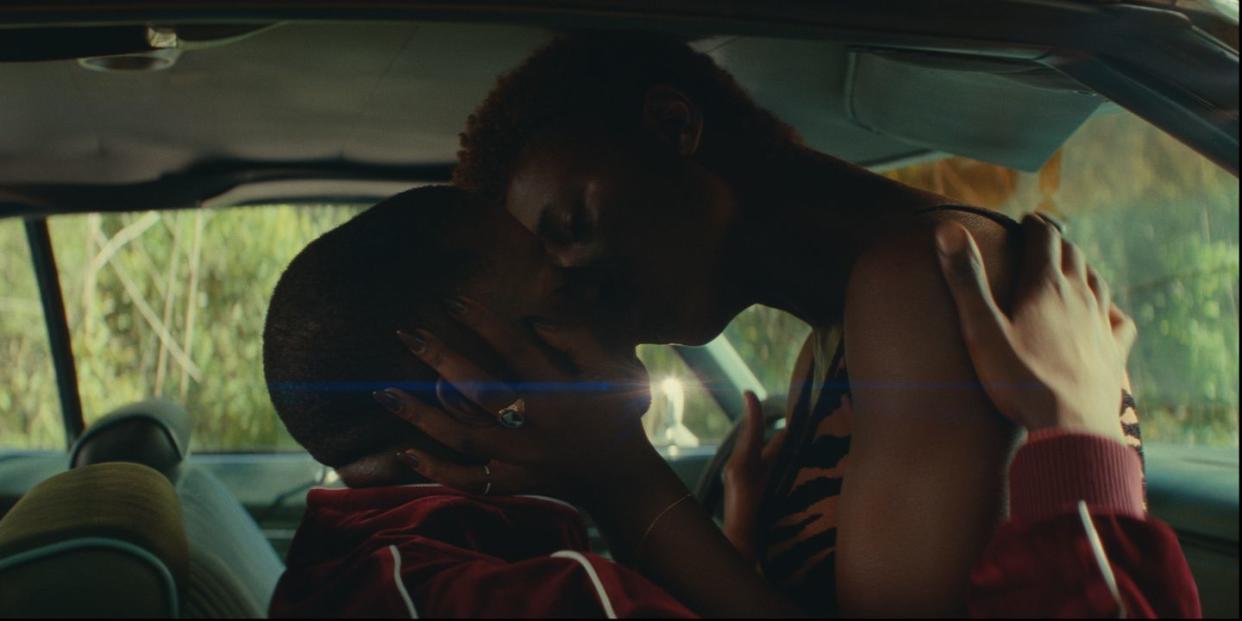
Lena Waithe and Melina Matsoukas' Queen & Slim hit theaters on November 27.
The film, starring Jodie Turner-Smith and David Kaluuya, features a nuanced plot that serves as "protest art" for the Black experience.
Below we detail key plot spoilers that are so much more than they appear.
Writer Lena Waithe has called her new film, Queen & Slim, a form of "protest art"—a way for her to articulate the current Black American experience.
"I know Nina Simone said it is an artist's duty to reflect the times," she told CBS. "And I believe I'm doing that—I'm reflecting the times in which we live. I believe it's open season on Black bodies."
This reality is harsh, but it's one she and the film's director Melina Matsoukas communicate with care and passion in Queen & Slim—a film that struck me as an instant Black cinema classic. The story follows the titular characters, played by Jodie Turner-Smith and David Kaluuya, as they go on the run after shooting a white cop in self defense. While they fight for their lives, the pair's budding love story is at the center.
But even looking past Turner-Smith and Kaluuya's stellar performances, after my second screening of the film, I couldn't help but notice a few subtle nuances peppered throughout the plot. It's clear that Waithe and Matsoukas had a focused intention when looking at every detail of the project, from the character's names to the shooting locations. Every aspect of the film was meant to showcase the Black experience.
"I always say that's that's what this film is about," Matsoukas said during a screening and Q&A session at The Weeksville Heritage Center. "It's about Black community, it's about Black love, not just in-front of the camera but behind it."
Below, with help from both Matsoukas and Waithe, you can read a breakdown of the symbolism behind key aspects of the plot of Queenn & Slim. There are many surface level moments of this movie that were so much more than they seemed—but be warned. Everything below is spoiler central.
Queen and Slim's story begins in Cleveland, Ohio.
It all comes back to Cleveland for Queen and Slim. It's where they meet on their first super awkward date—but it's also during the drive home from said date that Slim shoots a white police officer in self-defense, which causes the duo to run from the law.
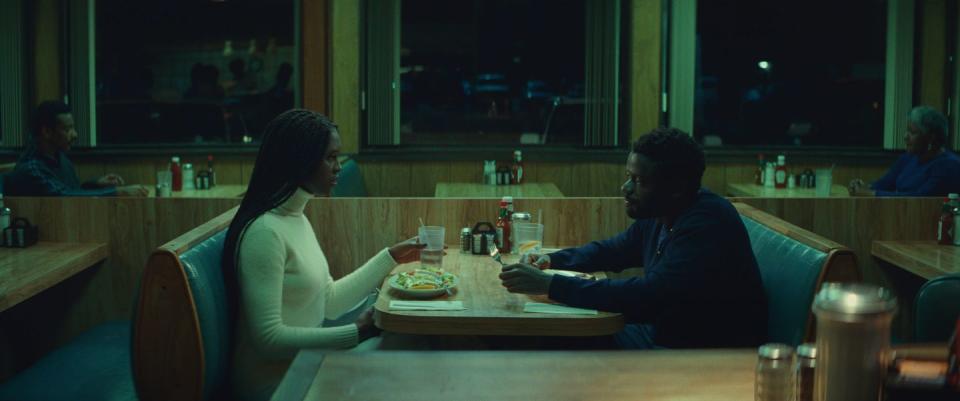
Taking the film's emphasis on Blackness and its cultural history in America, Waithe and Matsoukas explained to OprahMag.com that they specifically chose Cleveland for the characters to begin their journey because it was one of the last stops on the Underground Railroad in the 1800s—right before escaped slaves would go to Canada.
"I’ve always seen this kind of as a reverse slave escape narrative," Waithe says. "They’re kind of on a journey on the Underground Railroad—the modern day Underground Railroad."
“I’d rather live.” - Slim. #QueenAndSlim
A post shared by Queen & Slim (@queenandslim) on Nov 7, 2019 at 2:03pm PST
Two other points? As Queen pointed out in the opening scene, Ohio is one of 25 states that still imposes the death penalty. The 2014 shooting death of 12-year-old Tamir Rice also occurred in Cleveland—a dominant motivator for the #BlackLiveMatter movement. His story was in the back of the creators' minds as well.
"I had actually scouted Cleveland the year before, and I went to visit the site where he was killed in the playground. Everything is based on authenticity," Matsoukas told Elle.
Slim's car.
Matsoukas also explained that the car Slim drove when he got pulled over was specifically chosen because of what she observed while visiting the neighborhood in which Rice's murder occurred.
"Slim has the white Accord because I was on that same street—which is in a Black community," she told Elle. "In a half hour, six people were pulled over, and I remember a white Accord being pulled over by Cleveland police. I was like, 'It’s Slim’s car—that’s him.'”
The bar where Queen and Slim have their second date.
#QueenAndSlim hits theaters in ONE WEEK. Video art by @sharnaosborne.
A post shared by Queen & Slim (@queenandslim) on Nov 20, 2019 at 9:21am PST
During what Slim calls their official "second date," the couple takes a moment from their escape to relax, have a drink, and go dancing at a Mississippi bar. And while it's clear that the patrons recognize them, all is well.
"Our juke joint is actually called The Underground, and it’s a safe haven for them when they land there," Matsoukas tells us. "And they’re able to have this fleeting moment of freedom where they’re actually able to fall in love."
And if you're curious about the elderly man in the scene who was putting on a concert in the background—that was Mississippi blues legend Little Freddie King.
Queen and Slim's names.
Black love, 2019. By Campbell Addy. #QueenAndSlim
A post shared by Queen & Slim (@queenandslim) on Nov 11, 2019 at 1:36pm PST
Because of the movie's title, it's obvious throughout the more than 2-hour long runtime that the people on screen are known as Queen and Slim. But Matsoukas and Waithe made the decision to never refer to them as such throughout the entire film.
"We wanted Queen and Slim to represent all of us," Matsoukas said during the The Weeksville Heritage Center screening. "All of us women are Queens, and Slim is obviously a name that Black men are called quite frequently, and we wanted our community to see themselves reflected in these characters."
In fact, we don't learn the pair's actual names until the end of the movie, when news of their deaths hits national broadcasts: they are Ernest Hinds and Angela Johnson. The former's moniker was dedicated to a notable 1960s Black Panther.
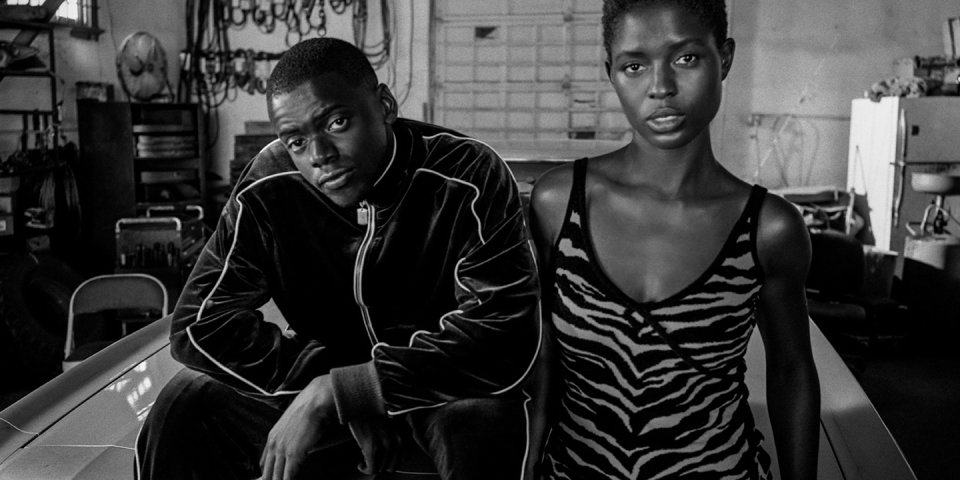
"Queen’s actual name is Angela, for [activist] Angela Davis," Matsoukas tells OprahMag.com. "We wanted to build upon the legacy on which our heroes had built—and the fight in which they had struggled through and won."
And there was yet another message underneath that easter egg—particularly when it came to why it took so long for us to hear their names.
"We also wanted to speak to how Black bodies and Black lives are often more honored in death than in life," the director says. "And we don't get to know who these people actually are until they're no longer with us."
The constant presence of religion and crosses.
From the first scene, it's clear that Christianity is ingrained in the DNA of this film. Slim dutifully prays before he eats while Queen impatiently looks on. (We later learn she doesn't believe in God.) The license plate on his Accord reads "TrustGod," and there's a cross present in nearly every frame of the movie, from one on Queen's Uncle Earl's turquoise wall to a rosary hanging from the rearview mirror in one of the couple's many getaway cars.
Chloë Sevigny is Mrs. Shepherd. By Lelanie Foster. #QueenAndSlim
A post shared by Queen & Slim (@queenandslim) on Sep 21, 2019 at 10:45am PDT
Religion has always had a strong presence for Black people—a source of strength in both happy and dark times. And no matter your level of belief (from Queen's atheism to Slim's devoutness) you can't get away from it in the African American community.
"I’m a person who is constantly marinating on religion, because I was raised religious," Waithe told Elle. "[It’s] very much a residue left behind from slavery, in terms of Sunday being the only day they got off. It was the one thing that was sort of honored, yet it was the thing that [made] them say, 'Oh, this is why we’re slaves, because the Bible says so.' It was [what] they needed to give them joy, but it was the thing that kept them in captivity. There’s still a lack of freedom, because of religion, in the Black community."
That devastating riot scene.
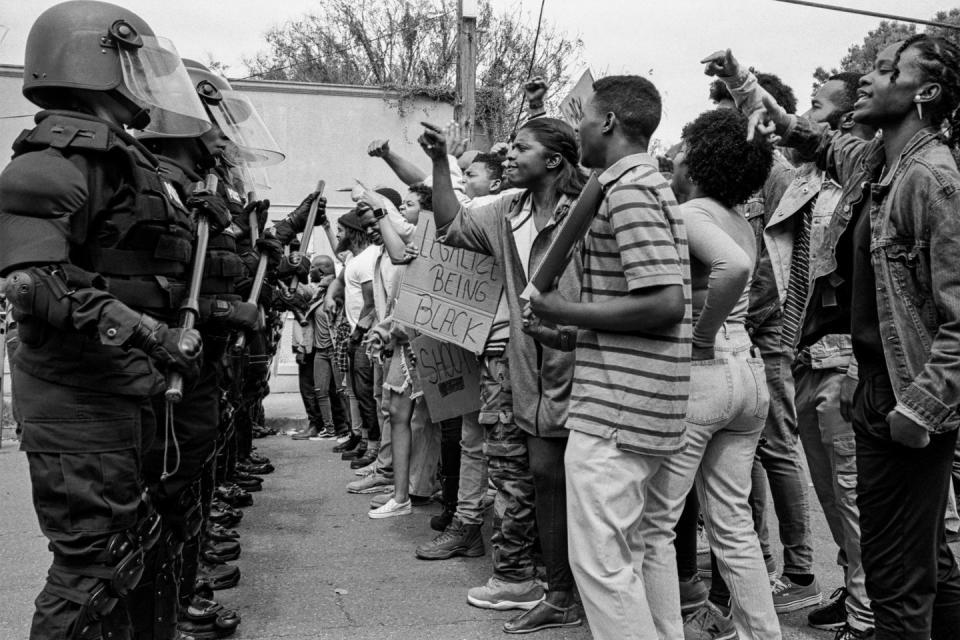
In one of the most jarring moments of the movie, during a protest in support of Queen and Slim, a young Black boy—that the couple had just met hours before—shoots a Black cop in the face. It's a scene that leaves you asking, "Why?" Of course, Matsoukas had an explanation, bringing it back to the unrest Black communities have with the police. On the one hand, we see a young man who's caught up wanting to have his voice heard—but whose passions cause him to take a terrible left turn.
Junior, 2019. By Andre D. Wagner. #QueenAndSlim
A post shared by Queen & Slim (@queenandslim) on Sep 26, 2019 at 11:25am PDT
"We also wanted to speak to law enforcement, and as an institution, the racism within it," Matsoukas said at The Weeksville Heritage Center. "Once you put on that uniform...you're responsible—even as a Black man—for the sins of your colleagues."
The name of the cop that lets them escape.
During both of the screenings I attended, the audience erupted into applause when a cop let Queen and Slim go after discovering their attempt to flee the Georgia home of Uncle Earl's friends.
During this moment of joy, I couldn't help but notice the Black policeman in question's name tag. And as it turns out, it was another hidden gem dedicated to a certain classic poet.
"He didn’t have a name [at first]. He was just 'Black cop,'" Waithe tells us. "But then it was some sort of combination of me and Melina, like, 'Oh, let’s call him Langston.' I have a Langston Hughes quote on my arm that says 'I, too, am America.' And also my nephew—I named my nephew for him."
Yes, y'all, love is truly in the details for this one.
A female cop shoots Queen.
At the end of the film while hand-in-hand with Slim, Queen is instantly killed with one sudden shot—at the hands of a white, female cop.
At The Weeksville screening, Matsoukas explained that she and Waithe wanted a woman to be the one to end Angela's life. It served as a sort of commentary on the phenomenon of white feminism, which often finds Black women's Caucasian counterparts choosing to ignore the intersectionality of equality for all. In reaction to the 2018 murder of 18-year-old Nia Wilson, Harper's Bazaar defined it as "the type of behavior that rests under the guise of feminism only as long as it is comfortable, only as long as it is personally rewarding, only as long as it keeps 'on brand.'"
To put it simply, a woman shooting a fellow female served as an example of the betrayal of sisterhood and unity that puts so many people in our culture in harm's way.
The man who turned Queen and Slim in.
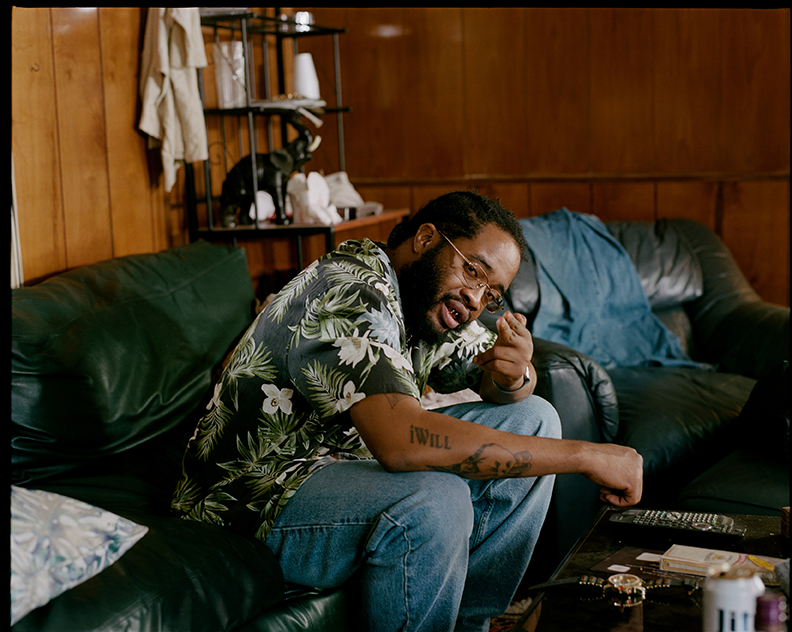
"Why's it always gotta be the Black guy?" At least, that was my reaction when we see who sold-out our beloved fugitives to the authorities as he flashes his blinged out grill and stacks of cash.
But as much as we hated to see our heroes fall—and betrayed by their own—once again the minds behind Queen & Slim made it all make sense.
"We wanted it to be complicated. We wanted it to show how we're socialized. What the affects of racism do to our community," Matsoukas said.
"Like the Black man who sells them out, he's a victim of capitalism... In that moment you're not thinking of values, you're just thinking of 'How am I gonna eat?' And that's what that man is thinking of in that moment. He's thinking of himself as an individual and has sold out the community in order for his own individual growth, and that's all of us. We have to deal with that in or community. How do we do that? How do we support each other? How do we unify?"
For more ways to live your best life plus all things Oprah, sign up for our newsletter!

